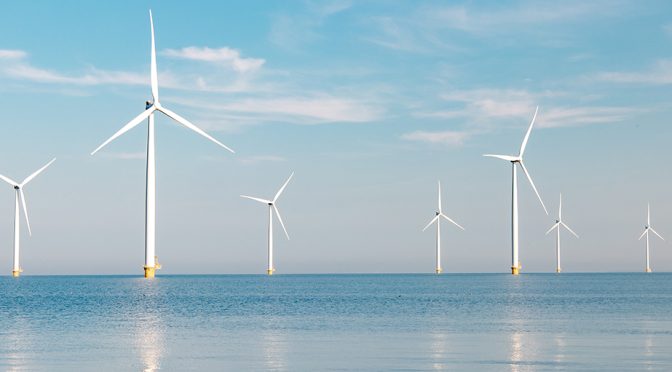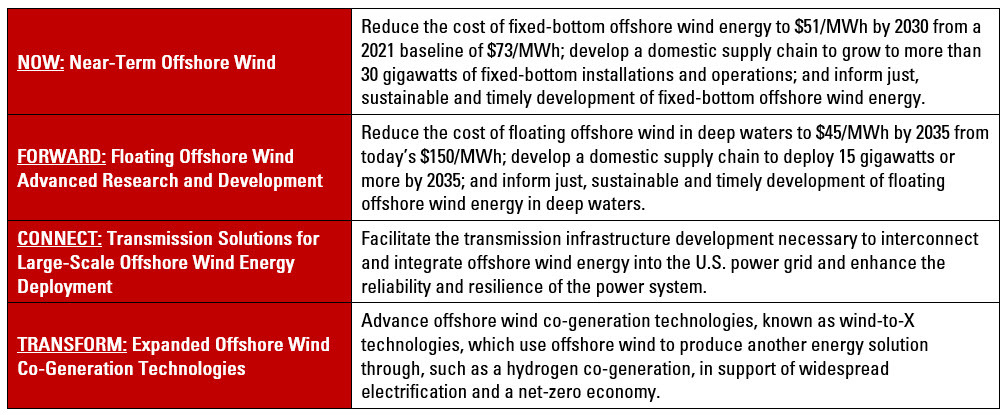
On Thursday March 29, 2023, the Department of Energy (DOE) announced its offshore wind strategy to advance the deployment of offshore wind energy in the United States. The strategy reflects the DOE’s comprehensive approach for accelerating a carbon-free electricity sector by 2035 and a net-zero economy by 2050.
The Department of Energy (DOE) has established the offshore wind energy strategy to meet the Biden administration’s goals to deploy 30 gigawatts of offshore wind by 2030 and to create a pathway for 110 gigawatts or more by 2050, including 15 gigawatts of floating offshore wind by 2035.
DOE’s strategy is structured around four major initiatives that seek to, among other things, reduce costs, spur supply chain development, achieve equitable and sustainable development, develop transmission solutions for large-scale offshore wind, enhance grid reliability and resilience, and promote offshore wind co-generation.
The strategy will be implemented through a range of activities, including research, coordinated planning, technical assistance programs and demonstration projects, all of which will be done in collaboration with federal departments and agencies, such as the Department of Commerce, the Department of Transportation, the Bureau of Ocean Energy Management and numerous state, local and tribal government agencies and organizations.
The Opportunity and the Vision
The wind atop U.S. waters presents an estimated potential resource of 4.2 terawatts, which is more than three times the total electricity-generating capacity operating in the United States in 2021. The Biden administration’s goals of 30 gigawatts of offshore wind by 2030, 15 gigawatts of floating offshore wind by 2035, and creating a pathway for 110 gigawatts by 2050, would create nearly 135,000 jobs by 2050 and sustain more than $12 billion a year in capital investments, with a projected aggregate project investment through 2030 of $97 billion. The Department of Energy’s (DOE) vision is to create a future in which the United States plays a global leadership role in offshore wind development and in which offshore wind development is economic, reliable, sustainable, just and timely.
Strategy
To achieve its vision, DOE has established a comprehensive strategy structured on four initiatives based on commercial readiness of enabling technologies:

In execution of the strategy, DOE will work with numerous agencies, including the Bureau of Ocean Energy Management, the Army Corps of Engineers, the U.S. Maritime Administration, the National Oceanic and the Atmospheric Administration and Federal Energy Regulatory Commission (FERC).
Conclusion
DOE’s offshore wind energy strategy comes on the heels of the Biden administration’s recent actions to expand offshore wind nationally, including the proposed first-ever Gulf of Mexico offshore wind lease sale, the expansion of the federal-state offshore wind implementation partnership, the first-ever offshore wind leasing strategy and the Inflation Reduction Act’s historic suite of clean energy tax credits. The strategy reflects DOE’s resolve for achieving the vision of establishing American leadership in offshore wind energy. However, the key challenges remain to reduce costs, increase the number of U.S. wind turbine installation vessels, and avoid the risk of permitting delays and grid integration. Addressing these challenges would require efforts beyond DOE, including bipartisan support for permitting reform.